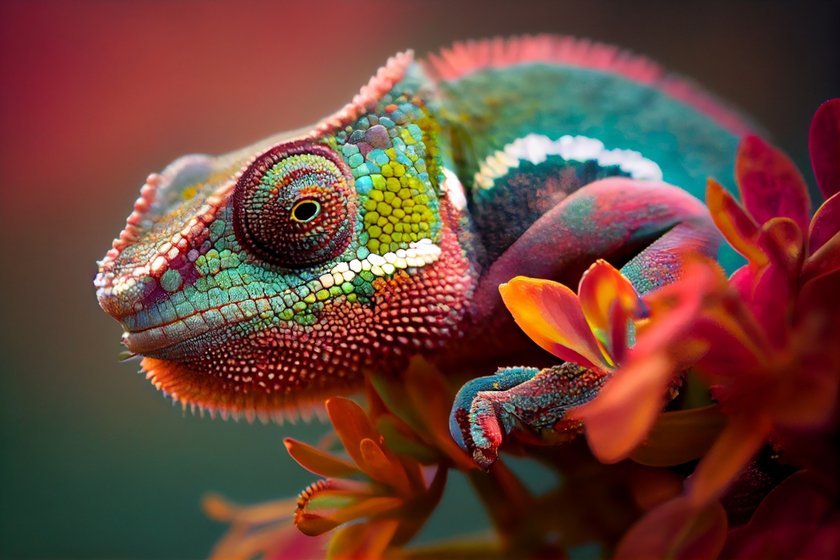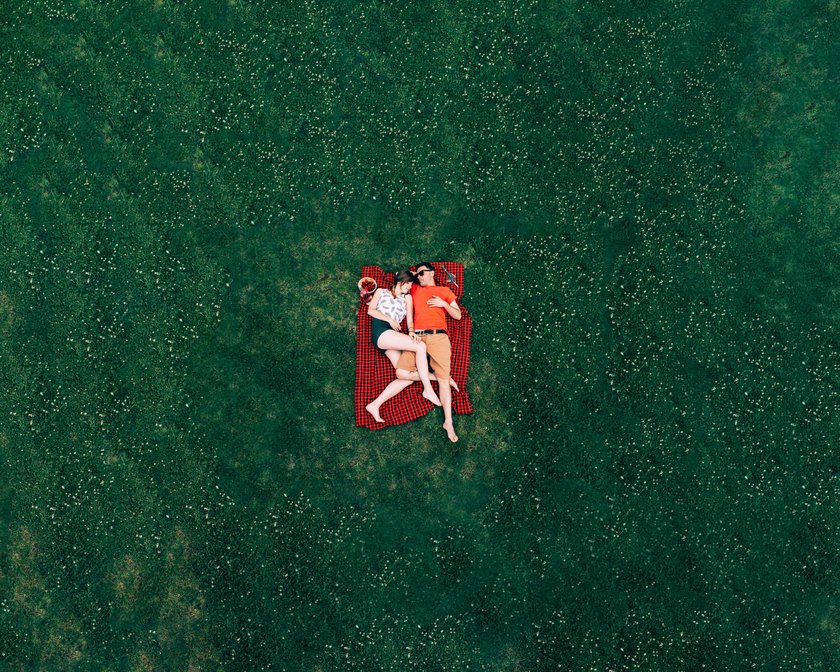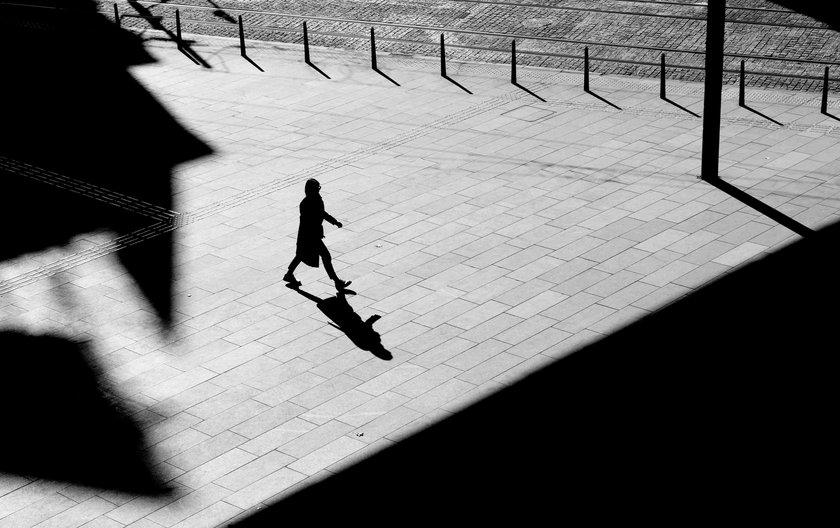Contrast In Photography: 10 Tips And Examples
August 21, 2023

In photography, where capturing moments is an art form, contrast emerges as a pivotal force that breathes life and depth into images. The silent narrator guides the viewer's gaze, evoking emotions, emphasizing details, and adding drama to the visual narrative. The deliberate juxtaposition of bright and shadowy areas introduces a sense of dimensionality, making subjects leap off the frame with an almost tangible realism.
From the stark black and white photography to the subtle tonal variations in color images, mastering the skill of managing contrast empowers photographers to sculpt the very essence of their shots. Let's figure out what is contrast in photography and how to achieve its desired level.
What Does Contrast

Contrast in photography is to the range of difference between the darkest and lightest elements within an image, emphasizing the separation between light and shadow. Characterized by stark differences between light and dark areas, high contrast tends to enhance the visual drama and depth of an image.
In portraits, it makes features more prominent and expressive, highlighting unique facial expressions and contours. In landscapes, high contrast helps in differentiating between the foreground and background, adding a sense of depth that engages the viewer more directly.
It also aids storytelling by guiding the viewer's eye through the frame. The stark difference between light and dark areas naturally draws attention to key elements, directing the observer's focus to the intended focal point. This manipulation of visual hierarchy can be instrumental in conveying the intended message or emotion behind the photograph.
Contrast is the artist's palette knife, sculpting the visual experience by shaping tones and shades. Its skillful application can transform an ordinary photograph into a captivating work of art, evoking emotions, emphasizing details, and creating a lasting visual impact. As photographers continue to explore the intricate dance of light and darkness, they harness the power of their difference to capture seen and felt moments. Let's get acquainted with its main types to better understand the contrast in photography examples.
Main Types Of Contrast

Photography has several main types of contrast, each adding a distinct dimension to images. These diverse types infuse photographs with depth, emotion, and visual intrigue when skillfully employed.
Tonal contrast, often called "brightness contrast," involves the difference between light and dark areas in a photograph. It's about the variation in shades, contributing to the overall mood and depth.
Color contrast is all about the interplay of different colors in a shot. Complementary colors like red and green create vibrant visual tension, while analogous colors like blue and purple offer a harmonious blend.
Texture contrast photography highlights the difference between the textures of various elements. It's particularly impactful in close-up shots, where details like roughness or smoothness become strikingly apparent.
Subject contrast, on the other hand, involves juxtaposing distinct subjects with varying characteristics. Placing a small object against a large one or a light subject against a dark backdrop creates a powerful visual focus.
Compositional contrast deals with arranging elements deliberately. For instance, positioning a static subject against a dynamic background or placing a sharp subject amid blurry surroundings.
Temporal contrast captures the essence of time through differences. It can involve freezing a fast-moving subject in a slow-shutter shot or depicting stillness amid motion.
Finally, emotional contrast encapsulates the feelings evoked by opposing elements in an image. A joyful face amidst a solemn crowd exemplifies this dynamic interplay.
But the two most important types are often combined with others and are especially important when creating black and white photos.
Advanced yet easy-to-use photo editor
Get Luminar Neo NowHigh Contrast VS Low Contrast

High contrast meaning in photography signifies images with strong differentiation between light and shadow, creating bold, well-defined edges and vibrant tones. High-contrast images often exude energy and drama, drawing attention to specific elements and making sense of intensity. Here are some tips on how to get a good shot using this technique:
- Shoot during strong sunlight or use artificial lighting to enhance highlights and shadows.
- Opt for a wide aperture (lower f-number) to exaggerate the contrast.
- When editing, increase contrast settings slightly and enhance blacks and whites. Incorporate vibrant color palettes to intensify the visual impact.
- Position subjects against backgrounds with contrasting tones to make them pop.
- Experiment with dramatic compositions and angles to enhance the dynamic feel.
By harnessing strong lighting, thoughtful editing, and strategic composition, you can produce high-contrast images that captivate with their striking and energetic visual presence.
As opposed, low contrast refers to images with minimal variation between light and dark areas, resulting in a more subdued and muted appearance. Details might appear less distinct, and the overall mood tends to be softer and less dynamic. For capturing low-contrast photos, try these steps:
- Focus on even lighting and reduce extremes between light and shadow.
- Opt for overcast days or shoot during the soft glow of dawn or dusk.
- Consider using diffusers or reflectors to mitigate harsh sunlight.
- Use a narrower aperture (higher f-number) to maintain uniform brightness across the frame.
- Employ a lighter editing touch to preserve subtle tones, avoiding drastic adjustments.
- Incorporate soft, pastel color palettes to enhance the subdued effect.
- Utilize a lens hood to minimize unwanted light flares.
- Frame subjects against backgrounds with similar tonalities.
Controlling light, employing gentle editing, and mindful composition, you can achieve captivating low-contrast images with a serene and understated aesthetic.
The choice between high and low contrast depends on the image's desired visual impact and emotional tone. High contrast adds dynamism, while low contrast conveys a gentler, nuanced atmosphere.
Shades In Black And White Photography

Contrast In Black And White Photography is a crucial element that breathes life into monochromatic compositions. Light and darkness play center stage, dramatically shaping the visual story. Deep blacks and bright whites enhance the separation of subjects, making them pop against the neutral backdrop. Shades of gray differentiate elements, crafting a three-dimensional feel in the absence of color. The deliberate management of it can evoke emotions, emphasize textures, and lend a timeless quality to images. Subtle nuances in grayscale tones can reveal intricate details, while bold variations, on the contrary, can infuse photographs with energy and intensity. Ultimately, in black and white photography, the mastery of difference transforms ordinary scenes into captivating stories, showcasing the essence of light, shadow, and the intricate dance between the two.
Creating really interesting black-and-white photography involves careful consideration. Vary lighting to highlight differences between light and shadow, enhancing tonal contrast. Use side lighting to reveal textures and shapes. Incorporate strong subjects against simple backgrounds to highlight them. Adjust brightness and contrast settings subtly during editing to maintain details while enhancing separation between elements. Utilize dodge and burn techniques to emphasize specific areas. Enhance texture contrast by emphasizing surface details. Experiment with composition to juxtapose light and dark regions effectively. By thoughtfully combining these techniques, you can craft striking black-and-white images with depth, drama, and visual intrigue in your compositions.
How To Use Contrast in Photography

With the help of some adjustments, you can significantly improve the photo. We have prepared for you several examples of contrast photography ideas. Here are ten tips and examples to master this technique:
- Employ Backgrounds: Selecting an appropriate "background" is pivotal in highlighting your subject. Alter the backdrop to create a big difference between the subject and surroundings. Shoot against a white or black surface to achieve this effect. When dealing with smaller subjects, employ a portable reflector for subject illumination.
- Texture Exploration: Capture diverse textures to emphasize contrasts in surfaces, like rough and smooth.
- Highlight subjects through Color Schemes: Leverage your understanding of color wheels to craft color schemes that accentuate contrast within your images. Group objects of similar hues for subdued contrast shots. Alternatively, juxtapose brighter elements against darker ones to create pictures with heightened contrast.
- Capture Silhouettes against Bright Skies: Silhouette photography entails capturing a solid, dark subject against a bright backdrop, exemplifying high-contrast dynamics. Emphasize subjects with distinct outlines to enhance their prominence.
- Use Bold Shadows: Leverage well-defined shadows on sunny days to create compelling shadow patterns, a product of intense sunlight. Such conditions naturally yield high-contrast images.
- Still Life Brilliance: In still life compositions, experiment with contrasts in shapes, colors, and textures for a visually engaging outcome.
- Convey Mood: Manipulate contrast to convey specific moods in your images. Utilize high-contrast techniques for subjects radiating energy and vigor. Alternatively, employ subdued, low-contrast tones to evoke a vintage ambiance.
- Urban and Natural Landscapes: Urban settings often contrast modern architecture and natural elements. Nature offers dynamic contrasts between mountains and valleys, water and land.
- Portrait Play: Use contrast to emphasize facial features, drawing attention to expressions and contours in portrait photography.
- Post-processing: It is a crucial step in enhancing the visual impact of your images. All modern photo editors cope with this task perfectly. Start your acquaintance with contrast adjustment using a photo editor for beginners from Luminar Neo. You can fine-tune the difference between light and shadow through editing software to add depth and vibrancy. Adjust contrast settings to create bold tonal variations. Increase clarity to enhance texture and detail. Use curve adjustments to control contrast across different tones precisely. Be mindful not to overdo it, as excessive contrast can lead to loss of detail or unrealistic effects. Striking the right balance during post-processing ensures your images maintain a dynamic interplay of light and darkness, resulting in captivating and engaging visuals.
Remember, contrast is a versatile tool that extends beyond light and dark differences. Explore various aspects of your composition to create impactful, attention-grabbing photographs. By thoughtfully applying contrast techniques, you can elevate the storytelling potential of your images and make them more memorable and visually captivating.
Bottom Line

In addition to enhancing the quality of your photographs, skillful utilization of contrast nurtures your growth as a photographer. By infusing creativity into your work and coupling it with your grasp of contrast and color theory, you can craft mesmerizing images that captivate your audience. This process allows you to evolve your photographic style and expand your visual storytelling capabilities, ultimately creating a more profound connection between your images and those who view them.
At first glance, simple settings can radically change the whole picture. So remember to consider the contrast meaning in photography. It will help you emphasize important elements in the image and hide flaws. While achieving appropriate contrast in photographs is significant, it is a versatile tool with many possibilities. Much of its impact is subjective and tied to your unique creative perspective. The most effective approach is to observe and comprehend how contrast influences each image you take and how it captivates the viewer's gaze.





